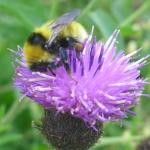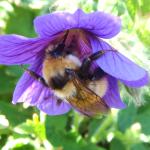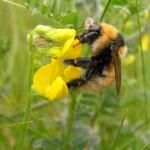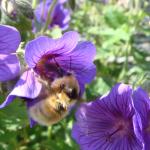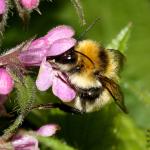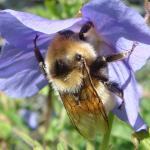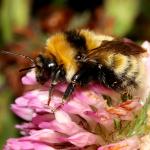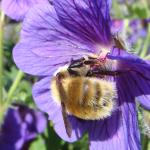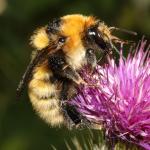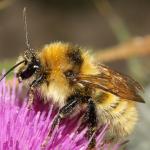Apis nemorum (FABRICIUS 1775 nec SCOPOLI, 1763 (= B. subterraneus (LINNAEUS)), not of FABRICIUS, 1775 (?= B. bohemicus SEIDL); Bombus elegans SEIDL, 1837
Colonies of this bumblebee produce few (less than 100) workers (Loken, 1973; von Hagen, 1994) and so female production is consequently also low.
The range within the British Isles has contracted alarmingly since the middle of the 20th century. Historically known from much of Britain and Ireland, although with a northern bias. It is now (1999) only definitely know n to be present on some islands of the Inner and Outer Hebrides, Orkney, and the north coast of mainland Scotland. There is an older record for Shetland. This is a northern Palaearctic species with a world distribution from Britain in the west to Sakhalin in the east (Loken, 1973).
Listed as Notable B in Falk (1991) (now known as Scarce (Nb)). Work for this Atlas suggests that its status should be reviewed. It is one of five bumblebee species selected as part of the UK Biodiversity Action Plan.
A species of extensive natural and semi-natural grassland mosaics which support a high density of flowering legumes, particularly common bird's-foot trefoil and red clover; stands of common knapweed are also important. Such mosaics must contain nesting sites, forage areas and hibernation sites. The last of these need to be dry in winter and out of direct sunlight. Areas of tussocky, taller grasses are important as nesting sites. Good foraging areas are associated with unimproved, autumn or winter grazed, cattle pastures.
Overwintered queens are found in May and June, workers from June to September and males in August and September.
Nests are usually constructed underground in small mammal burrows or off rabbit burrows, particularly if mammalian nest material is present. In the Outer Hebrides areas of tussocky marram are very attractive to nest-searching queens. Acceptable nesting sites may well be a limiting resource as usurpation attempts were observed several times during intensive studies in 1998.
This bee visits a range of flower species but is found particularly on those of the family Fabaceae; over 50% of foraging visits were to red clover during the 1998 studies.
None reported from Britain.
Profile written: 2001
Updated: December 2011


